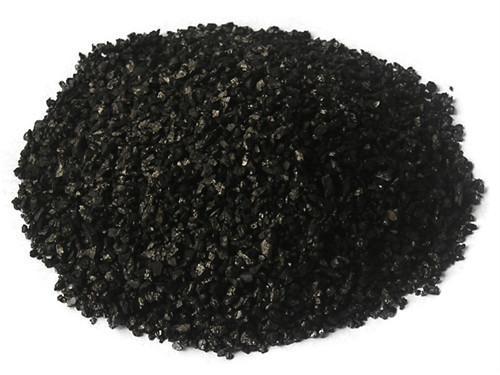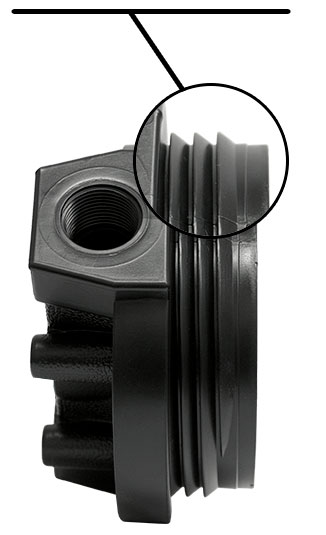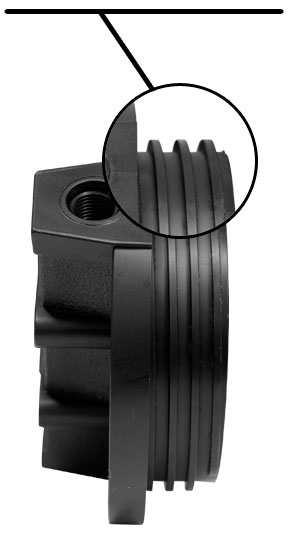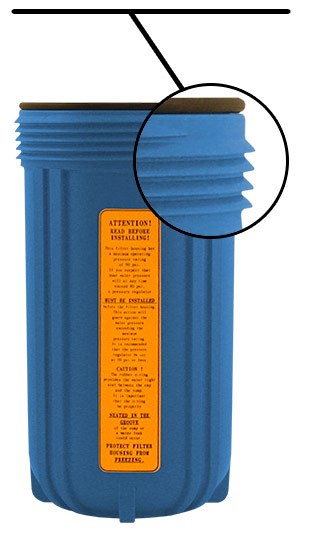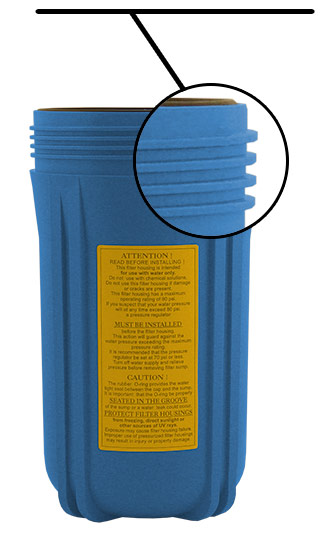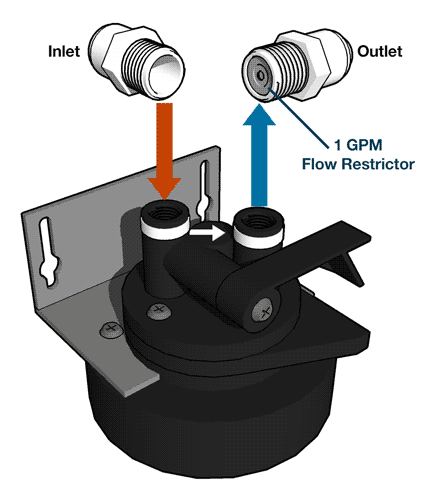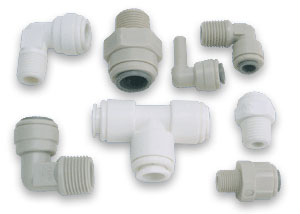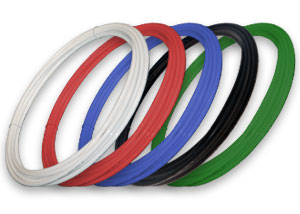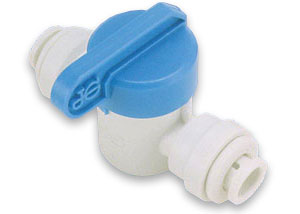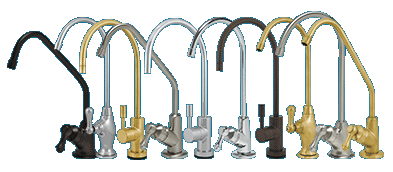A whole home water purifier is an excellent filtration method to ensure every tap in your home or business produces healthy, tasty water free of sediment and contaminants. Activated carbon water filters are a great choice for high water quality and safety. Learn the science behind activated carbon and the advantages of a whole house carbon filter.
What Does Activated Carbon Do?
Activated carbon is an extremely porous solid derived from carbon-rich substances such as coconut shells, wood, or coal.
It is important to distinguish between activated carbon and other forms of carbon, such as graphite or charcoal. While all these materials contain carbon atoms, activated carbon is unique due to its high porosity and surface area, which enable it to adsorb a wide range of impurities. In contrast, charcoal, although carbon-rich, lacks the same porosity level and is less effective for water filtration.
This highly porous form of carbon can effectively trap impurities and contaminants in water, providing clean, better-tasting tap water as part of a whole home water purifier. Carbon filters drastically reduce chlorine, sediment, volatile organic compounds (VOCs), and other harmful substances from municipal or well water.
Carbon’s unique structure, characterized by an extensive surface area and a network of tiny pores, allows it to effectively adsorb impurities and contaminants from water, making it an essential component in water filtration systems. To highlight, the surface area of a single gram of activated carbon can reach 1,000 square meters, providing ample space for contaminants to bind.
This adsorption property enables activated carbon to trap various chemicals, chlorine, and volatile organic compounds.
How Does Activated Carbon Work?
The production of activated carbon only involves two steps: carbonization and activation.
Step 1: Carbonization
The raw material is heated in an oxygen-controlled environment during carbonization to eliminate moisture and volatile compounds.
Step 1: Activation
The activation process involves treating the carbonized material with steam or chemicals at high temperatures, which develops the porous structure that defines activated carbon. This method enhances its adsorption capabilities and maximizes efficacy in a whole home water purifier.
Activated carbon filters operate through a process known as adsorption, which is distinct from absorption.
Adsorption: Water contaminants adhere to the activated carbon’s surface, effectively trapping them. This process is highly efficient, as activated carbon uniquely attracts and holds various organic compounds, chlorine, and even some heavy metals, significantly improving water quality.
Example: Water molecules sticking to a glass window, like when you spray window cleaner on it, but not piercing the glass is adsorption.
Absorption: A fluid (the absorbate) dissolves or permeates into a liquid or solid (the absorbent). As with adsorption, the absorbate becomes part of the fluid rather than just adhering to the surface.
Example: A sponge soaking up water is absorption because the water is absorbed into the sponge’s pores and doesn’t just stick to the surface.
The activated carbon filtration process typically involves these key steps:
- Pre-filtration Phase: water flows through the filter, removing larger particles.
- As the water flows, smaller contaminants are captured by the activated carbon.
- Over time, the carbon becomes saturated with adsorbed impurities, which may need to be replaced to ensure optimal performance.
What Do Carbon Filters Remove from Water?
Activated carbon‘s porous nature allows it to capture many impurities, making it an essential component in many water filtration systems.
Activated Carbon Filters in a Whole Home Water Purifier Can Remove:
- Chlorine is often used in municipal water supplies for disinfection, which can leave an unpleasant aftertaste. By eliminating chlorine, activated carbon enhances the taste and odor of water and reduces the formation of harmful by-products associated with chlorine usage.
- VOCs (volatile organic compounds) can originate from various sources, including industrial pollution and household products.
- Pesticides and heavy metals pose a significant concern to water quality. Activated carbon filters can adsorb certain heavy metals, but their effectiveness can differ depending on the specific metal and the filter’s design. Lead and mercury can be partially removed, but complete removal is not guaranteed. This interaction is due to the size and charge of the heavy metal ions, which may not bind as effectively to the carbon surface.
It’s essential to recognize the limitations of activated carbon filters. While they excel at removing chlorine and VOCs, they are not universally effective against all contaminants. For example, they typically do not remove dissolved minerals, salts, or specific pathogens. Therefore, for comprehensive water treatment, it is advisable to consider a whole home water purifier with activated carbon filtration to significantly reduce a broader spectrum of contaminants.
Benefits of Using a Whole Home Water Purifier with an Activated Carbon Filter
- Enhance the quality of drinking water through better taste and odor. Activated carbon effectively absorbs these chlorine compounds, resulting in cleaner, fresher-tasting water that is more enjoyable to drink.
- Activated carbon filters are a cost-effective solution compared to other filtration methods. Many think reverse osmosis systems and distillation processes are expensive to install and maintain, so they choose whole house water filtration with an activated carbon filter. This choice can also stem from what you are comfortable installing yourself.
- They require minimal maintenance and replacement costs, making them an economical choice.
- Activated carbon filters can provide comprehensive water treatment throughout your household when integrated with a whole home water purifier system. This setup ensures that every water outlet, from your kitchen sink to your shower, delivers clean, filtered water.
Find the Right Activated Carbon Filter for Your Whole Home Water Purifier
The two primary types of activated carbon are granular activated carbon (GAC) filters and carbon block filters.
GAC filters consist of loose granules of activated carbon, allowing for a larger surface area that effectively adsorbs impurities. However, they may not filter out the smallest contaminants as efficiently as carbon block filters. GAC filters are commonly used in under-sink systems and pitcher filters in residential settings because they are cost-effective and easy to install.
Carbon block filters are made from compacted activated carbon, providing a denser structure that can capture finer particles and reduce contaminants more effectively. Commercial environments like restaurants or food processing plants may require carbon block filters’ superior contaminant removal capabilities to ensure high-quality water standards.
- Assess the specific contaminants in your water supply, as different filters target different substances.
- Consider the flow rate and capacity needed for your household or business, which will impact the filter’s efficiency and lifespan.
- The filter must always meet industry standards for safety and performance, which can typically be verified through product specifications.
Shop for a Whole Home Water Purifier and Activated Carbon Filters
H2O Distributors carries an extensive selection of filtration systems (whole home, reverse osmosis, ultraviolet sterilization, and more). We also sell various water filters (sediment, activated carbon, and more) for your specific water needs and usage.
Our commitment to only selling credible brands and unmatched customer service compared to big-box stores makes us popular with homeowners and businesses.
Contact H2O today to find the best filtration system and water filter for your home or business.

